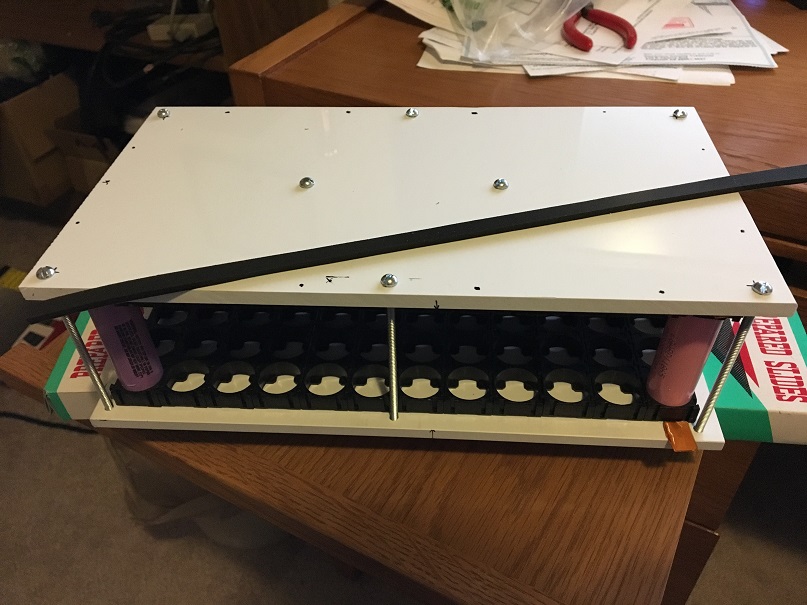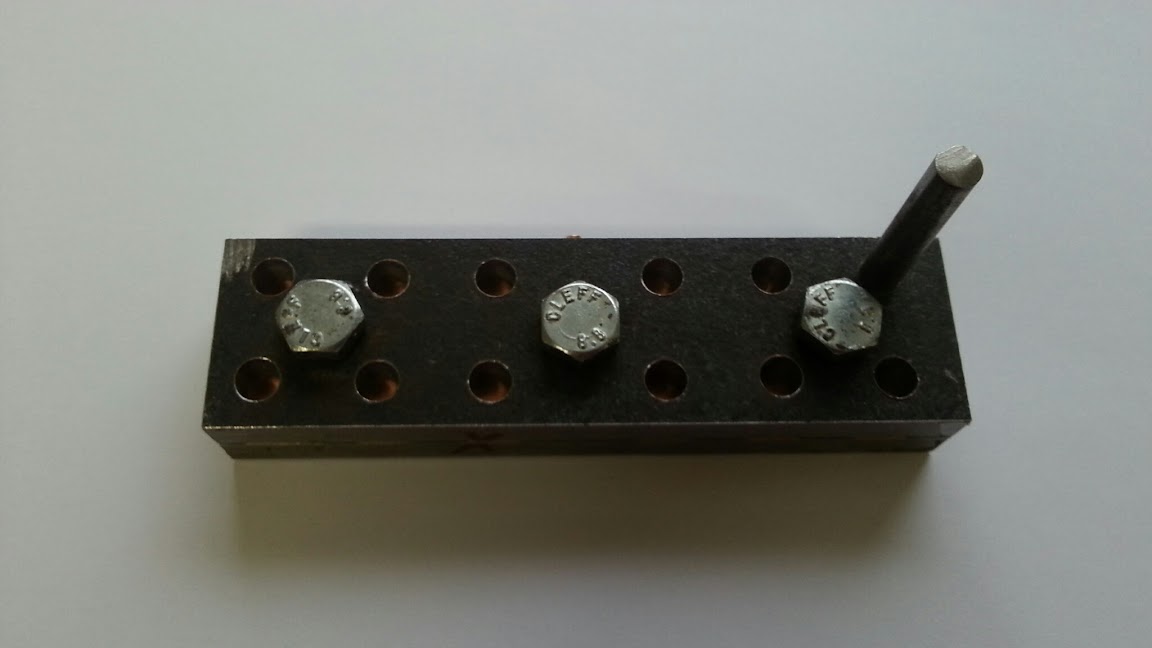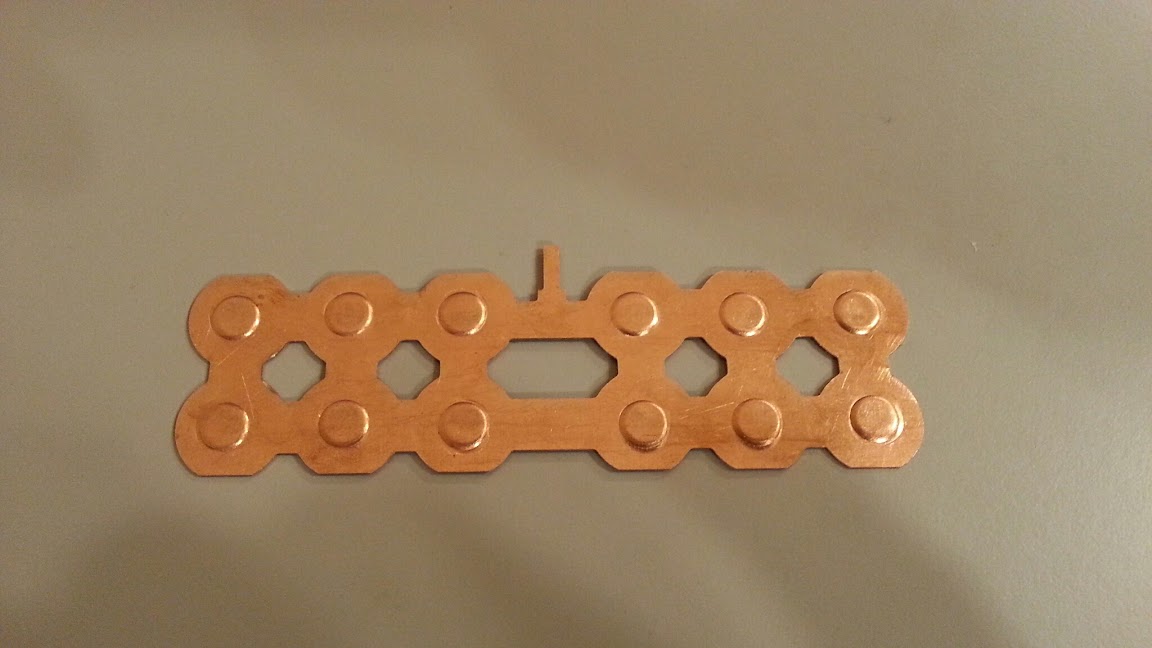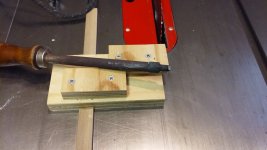Synon
10 W
This is a simplified design based off the other solderless packs I've seen here, similar to the one Snath posted here a few years back. The block shown will be 24p3s, going to hopefully build 4 of these which fit flat in my panniers for a 48v motor. The brackets are sandwiched between 1/4" PVC, strips of firm Poron (1 shown on top) will be used to press copper/nickle strips into the cells.
I'm considering keeping the block open for at least some air flow, thoughts on that? Or better to add more rigidity with walls or small strips of PVC alongside the brackets to keep them centered?
I noticed Snath used copper strips, any issue with using .15mm nickle strips instead?
I also need a DIY solution to putting dimples into the strips. I have access to lots of woodworking tools, but no metalworking. I can't think of any clever ways to do this, any ideas?
Looking for feedback, gotchas, improvements, suggestions, etc.


I'm considering keeping the block open for at least some air flow, thoughts on that? Or better to add more rigidity with walls or small strips of PVC alongside the brackets to keep them centered?
I noticed Snath used copper strips, any issue with using .15mm nickle strips instead?
I also need a DIY solution to putting dimples into the strips. I have access to lots of woodworking tools, but no metalworking. I can't think of any clever ways to do this, any ideas?
Looking for feedback, gotchas, improvements, suggestions, etc.









